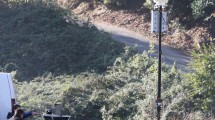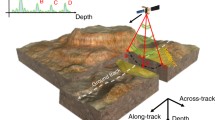Abstract
The hypothesis of a natural sophisticated RADAR navigation system guiding hornets flight and detecting obstacles and preys is derived from the investigation of the complex spike elements arrays on their cuticle skin shown by electronic microscope pictures. The occurrence of three different lengths and disposition of the spike elements lead from analogy with antenna and radio theory and practice to the hypothesis of transmitting and receiving phased arrays antennas operating at different frequencies in the sub-millimetric wavelength bands. The natural photo and piezo electric generation of energy in the hornets found previously explain how can be obtained the Radio Frequency (RF) energy required for the operation of the natural RADAR system. In this paper are presented a comparison with the bats well known sophisticated sonar tracking system and a description of the possible operation and main parameters of the complex three mode detection and tracking hornets natural RADAR. Following a discussion of the possible experimental and theoretical investigations still required for reaching final conclusions on a precise model of a sophisticated hornets tracking three mode RADAR system. It is possible that the results of the proposed investigations will provide tools to improve real tracking system performances especially in the yet not operative submillimeter wavelength ranges.
Similar content being viewed by others
References
Gavan, J. Ishay, J.S. "Hypothesis of Natural Radar Navigation Systems Guiding hornets flight" 24th International Symposium of IR and MmWaves, Monterey, Ca pp. FB3 (1–2) September 1999
Hudson, J.E., "Adaptive Array Principles", Peregrinus, London, 1981.
Ishay, J.S., O. Goldstein, E. Rosenzweig, D. Kalicharan, and W.L. Jongebloed "Hornet yellow cuticle microstructure: A photovoltaic system" Phys. Chem. & Physics and Med. NMR, Vol. 29,No. 1, pp.71–93, 1997.
Keil, T.A. "Functional morphology of insect mechanoreceptors," Microsc. Res. and Techn., Vol. 39, pp.506–531, 1997.
Gavan, J., Peled A. "Optimized LADAR/RADAR Systems for Detection and Tracking", 16th Int. Symposium of IR and Mm Waves, Lausane, Vol. 12, pp. 1035–1142, 1994.
Griffin D.R. “Listening in the Dark”, Yale Univ. Press, pp. 150–166, 1958.
Ishay, J.S., Kirshboim S., Steinberg D., Kalicharan D., and. Jongebloed W.L. "Hornet cuticle: A composite structure comprised of a series of duplex lamellae attenuating towards the interior of the body", Comp. Biochem and Physiol. Part A, Vol.120, pp. 661–670, 1998.
Gavan, J., Perez, R., Editor. “Electromagnetic Compatibility Handbook”, Chapter 19, pp.715–745, Academic Press, 1995.
Snowden, C.M., Stone W.R., Ed. "Towards Terahertz Semiconductor Technology” Review of Radio Science 1996–1999. Oxford University Press, pp.327–346, 1999
Gavan, J., “Ladar/Radar dual mode operation system for enhancing tracking range and accuracy” International Journal of IR and Mm Waves Vol. 15No 1, pp. 145–153, 1995.
Gavan J., Haridim M."Trimode LADAR/RADAR Transponder Systems for Tracking Long Range Cooperative Targets”. International Journal of IR and Mm waves. Vol. 17No 4 pp 721–734. 1996.
CCIR, "Propagation in Non Ionized Media” Recommendations and Report of the CCIR, Dusseldorf. International Telecommunication Union Publication, Geneva 1990.
Author information
Authors and Affiliations
Rights and permissions
About this article
Cite this article
Gavan, J., Ishay, J.S. Hypothesis of Natural Radar Detection and Navigation Systems Guiding Hornets Flight. International Journal of Infrared and Millimeter Waves 21, 309–320 (2000). https://doi.org/10.1023/A:1006669321663
Issue Date:
DOI: https://doi.org/10.1023/A:1006669321663




